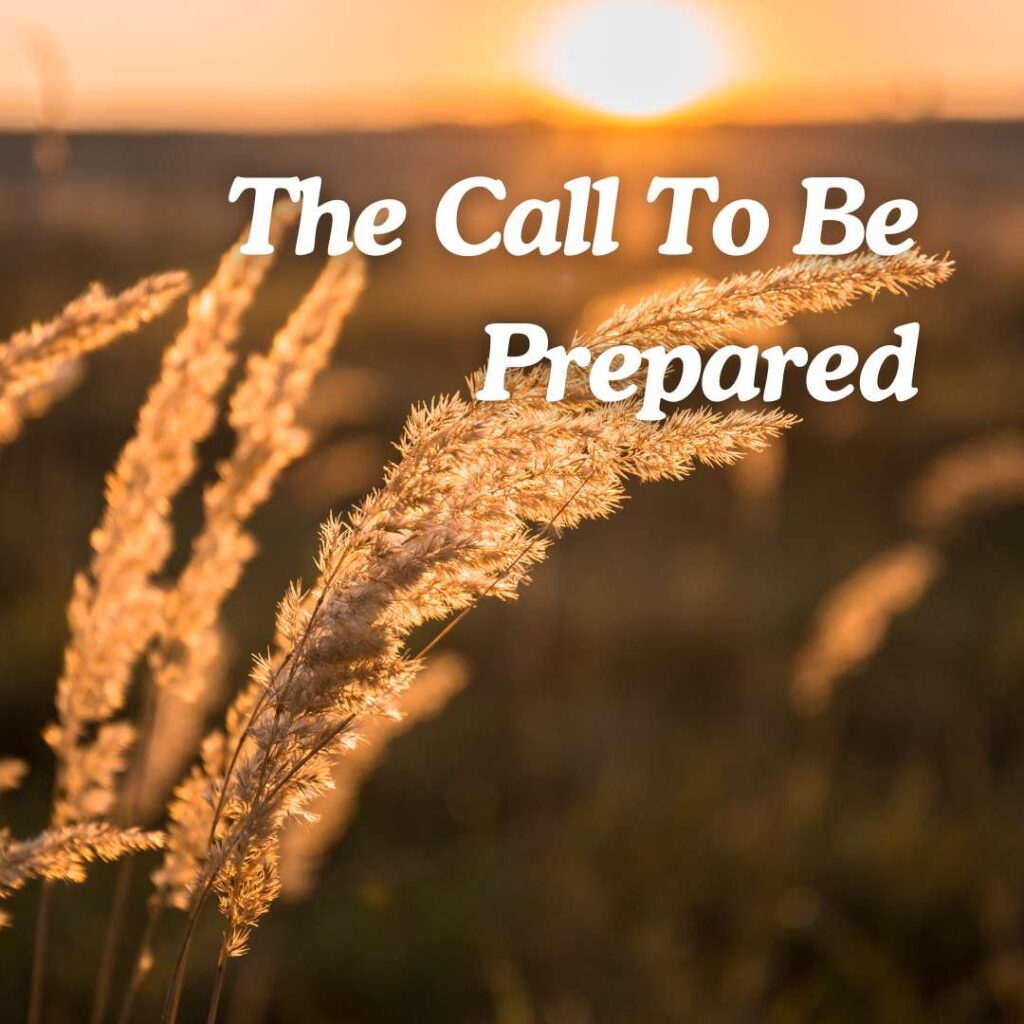 Scripture: Matthew 25:14-30 (WEBBE)
Scripture: Matthew 25:14-30 (WEBBE)
14 “For it is like a man going into another country, who called his own servants and entrusted his goods to them.
15 To one he gave five talents, to another two, to another one; to each according to his own ability. Then he went on his journey.
16 Immediately he who received the five talents went and traded with them, and made another five talents.
17 In the same way, he also who got the two gained another two.
18 But he who received the one went away and dug in the earth, and hid his lord’s money.
19 “Now after a long time the lord of those servants came, and reconciled accounts with them.
20 He who received the five talents came and brought another five talents, saying, ‘Lord, you delivered to me five talents. Behold, I have gained another five talents besides them.’
21 His lord said to him, ‘Well done, good and faithful servant. You have been faithful over a few things; I will set you over many things. Enter into the joy of your lord.’
22 “He also who got the two talents came and said, ‘Lord, you delivered to me two talents. Behold, I have gained another two talents besides them.’
23 His lord said to him, ‘Well done, good and faithful servant. You have been faithful over a few things; I will set you over many things. Enter into the joy of your lord.’
24 “He also who had received the one talent came and said, ‘Lord, I knew you that you are a hard man, reaping where you didn’t sow, and gathering where you didn’t scatter.
25 I was afraid, and went away and hid your talent in the earth. Behold, you have what is yours.’
26 “But his lord answered him, ‘You wicked and slothful servant. You knew that I reap where I didn’t sow, and gather where I didn’t scatter.
27 You ought to have put my money to the bank, and at my coming I should have received back my own with interest.
28 Take away therefore the talent from him, and give it to him who has the ten talents.
29 For to everyone who has, will be given, and he will have abundance; but from him who doesn’t have, even that which he has will be taken away.
30 Throw out the unprofitable servant into the outer darkness. There will be weeping and gnashing of teeth.’
Reflection:
The Parable of the Talents is a profound teaching about stewardship, responsibility, and the use of the gifts and resources God has entrusted to us. Jesus uses this parable to illustrate the importance of faithfulness and diligence in managing what we have been given.
1. The Gift of Responsibility:
In the parable, the master distributes talents to his servants according to their abilities (Matthew 25:14-15). Each servant receives a different amount, yet they are all entrusted with significant responsibility. This distribution reflects the understanding that each person is given unique gifts and opportunities.
This reminds us that God has entrusted each of us with different talents, resources, and responsibilities. Our task is not to compare ourselves with others but to faithfully manage and utilize what we have been given. We are called to recognize and embrace our individual roles and opportunities for service.
2. The Reward of Faithfulness:
The servants who use their talents wisely and invest them to generate more are praised and rewarded by their master (Matthew 25:20-23). They receive affirmation for their faithfulness and are entrusted with greater responsibilities. Their diligence leads to joy and increased trust.
This teaches us that faithfulness in our stewardship leads to greater opportunities and blessings. When we are diligent and responsible with what we have been given, God entrusts us with more and invites us to share in His joy. Our faithful use of resources is rewarded with increased trust and responsibility.
3. The Consequence of Fear and Inaction:
The servant who hides his talent out of fear is reprimanded and judged harshly (Matthew 25:24-30). His fear and inaction lead to the loss of what he was given and his expulsion from the master’s presence. His failure to act results in severe consequences.
This serves as a cautionary tale about the dangers of fear and complacency. The servant’s failure to invest and utilize his talent reflects a lack of trust and willingness to take risks. We are challenged to overcome our fears and to actively engage with the resources and opportunities God has provided, rather than letting them go to waste.
4. The Call to Active Stewardship:
Jesus concludes the parable with a stark message about the nature of stewardship (Matthew 25:29-30). Those who are faithful with what they have will receive more, while those who are unfaithful will have even what they have taken away. This underscores the principle that our actions with the resources we’ve been given have eternal significance.
We are called to be proactive and responsible stewards of the gifts and opportunities entrusted to us. Our faithful management of these resources reflects our trust in God and our commitment to His purposes. It’s an invitation to live actively in service and to invest our talents for His kingdom.
5. The Joy of Faithful Service:
The parable ends with an invitation to enter into the joy of the Lord (Matthew 25:21, 23). This joy represents the fulfillment and reward that comes from being a good and faithful servant. It is the ultimate outcome of faithful stewardship.
As we reflect on our own lives, we are encouraged to seek to enter into this joy by faithfully serving and investing our talents for God’s purposes. The joy of the Lord is both a present reality and a future promise for those who live faithfully.
Prayer:
Lord Jesus, we thank You for the Parable of the Talents and the lessons it teaches us about stewardship and faithfulness. Help us to recognize and embrace the gifts and opportunities You have entrusted to us. Give us the courage to invest our talents wisely and to overcome fear and complacency. May our actions reflect our trust in You and our commitment to Your kingdom. We look forward to entering into the joy of our Lord through faithful service. Amen.
Contemplation:
Take time to reflect on the talents and resources God has entrusted to you. How are you currently managing and investing them? Are there areas where you have been hesitant or fearful to act? Pray for God’s guidance in using your gifts effectively and for the strength to overcome any barriers to active stewardship. Consider ways you can better align your actions with His purposes and seek to bring about fruitful results in your life and ministry.
 Scripture:
Scripture:


